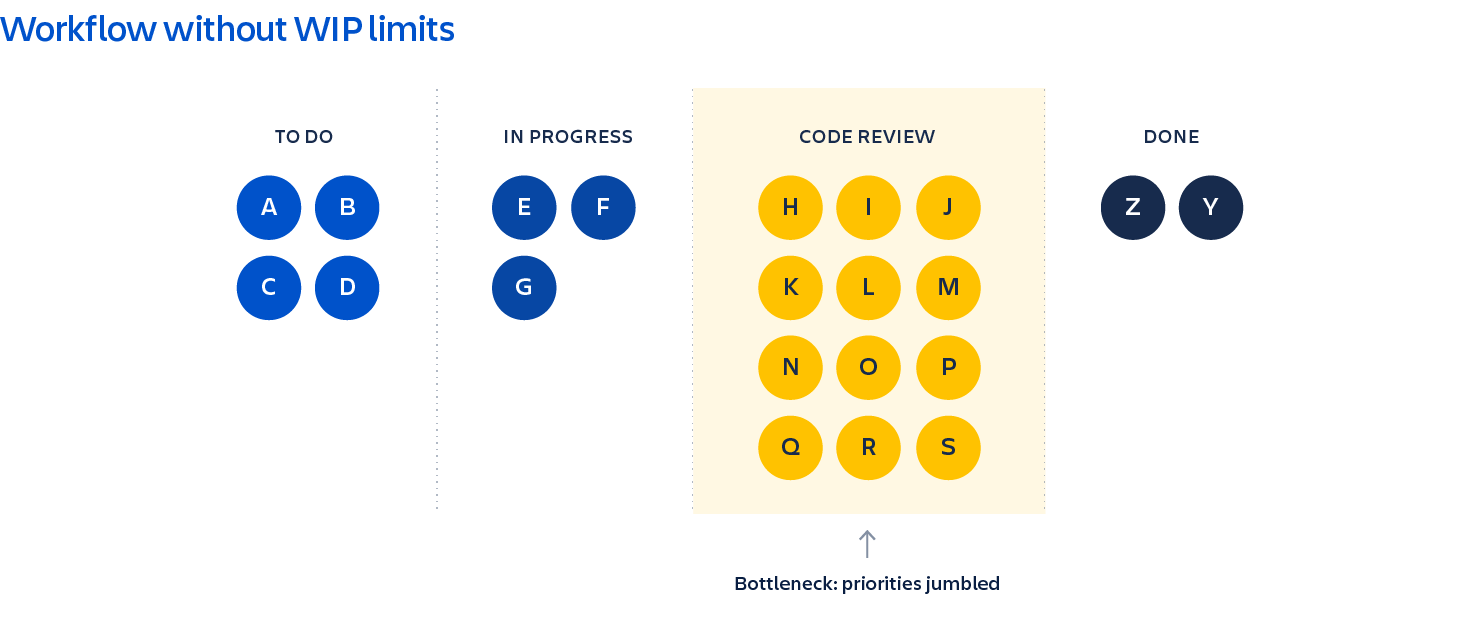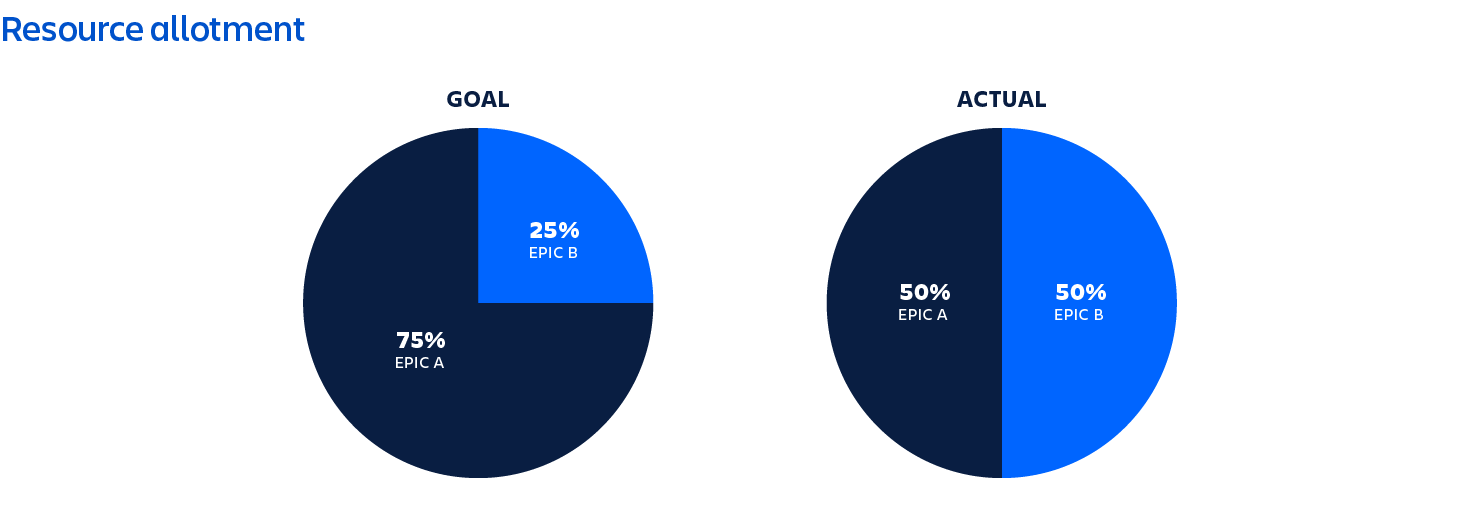4 ways to make your lean portfolio management even leaner
Craving more efficiency? These expert tips help avoid wasted time and careless spending to make your LPM process better.
As more companies embrace lean methodologies, the conversation around what lean really looks like continues to expand. At Atlassian, our conversations often involve testing our assumptions instead of relying on business cases, moving from a project mindset to a product one, and creating an environment where it’s safe to fail.
Those conversations are vital, but it’s also important to remember why we invest in organizational change in the first place. In the case of lean portfolio management, becoming lean means avoiding wasted time and careless spending.
In a recent on-demand webinar, Solutions Architect Mark Cruth and Project Lead Caz Gottlieb outlined four key strategies for making your lean processes even leaner. Here’s what they had to say.
1. Control your backlog using WIP limits
When it comes to wasting time and money, one of the core risk areas is your backlog. A huge backlog can leave companies in a panic since it’s not ideal to move items from the backlog to the work in progress (WIP) queue, leaving employees with an enormous amount of work.
A WIP queue includes projects that have just been started or ones that are partially finished and are awaiting completion – like that app you’re not quite ready to launch or a new feature that just went into development.
If too many items are thrown into the WIP queue, it can be overwhelming for teams scrambling to find time to work on their current project list. That’s why Mark and Caz say that it’s necessary to set WIP limits, which are exactly what they sound like – restrictions on how much work can be placed in any one stage of your workflow at a time.
Without a WIP limit of five items or fewer in each category, teams can find themselves with an unmanageable number of items on their plate. That leads to chaos, low morale, and huge bottlenecks. And if you’re only tracking the goods that make it through, you’re not seeing the whole picture of waste and chaos mid-process, which is why using limits is so smart.

If you implement a WIP limit, you control how much work moves through your process.

When only a small number of projects can move through the system at a time, it makes it easier for companies to prioritize which ones are essential to their success. Projects that are no longer necessary can be eliminated from the backlog to remove clutter. And when leadership reviews the workflow, instead of picking their way through the bodies of half-finished, deprioritized, or obsolete projects, they’ll have a cleaner and more efficient view of actual priorities and where they are in their quest to completion.
Setting WIP limits is also beneficial because it reveals the bottlenecks in your process. If you get an alert whenever part of your workflow hits its limit, you’ll start to get a sense of where delays occur the most, which teams are overwhelmed, and which approval processes are taking too long. The tighter your limits, the clearer your bottlenecks become before the WIP bodies stack too high.
2. Get aligned on top priorities using strategic themes
According to our experts, the lean path to priority alignment is strategic themes, which connect company objectives to portfolio priorities. Strategic themes influence portfolio strategy, provide the business context for decision making, and can be used to measure outcomes. For example, if your company wants to gain 1,000 mobile app users, then they need a strategic investment in resources to build the app. But getting everyone on the same page can be challenging. If you have several priorities from different stakeholders in many different parts of the company, it can be unclear which one comes first – everybody thinks their priority is #1.
By adding visibility to the process, through shared Kanban boards and charts, stakeholders have a better sense of where their priorities fit into the big picture. Their perspectives can also change when the full scope of the workload is on display. For instance, stakeholders tend to have more patience for their turn in line when they see the importance of other requests for resources.
3. Decouple the what from the how
Leadership and stakeholders with insights into the overall strategic direction of the company, the products, and the teams are (and should be) the ones driving what type of work to do. Should you build a mobile app? Is fixing Feature A more urgent than developing Feature B? Those are questions that they should debate and answers that they should define.
But problems arise when these leaders and stakeholders also dictate how things get done because of micromanaging during the process, which is why Mark and Caz say that the what and the how of any initiative should belong to different groups. What we do is the purview of leadership. How we do it is better left to the team members that are actually doing the work, and they should be empowered to pivot or choose a more efficient way of doing things as they see fit.
4. Focus on the time, not the money
Saving money and generating revenue are top priorities for every business. After all, we have to be profitable to keep our enterprises up and running. But our experts say that it’s time to turn our attention away from micromanaging money and focus on optimizing time and resources instead.
But how? According to Mark, it’s all about anticipating how we want teams to spend their time and tracking whether or not that time split is working out.
For example, let’s say leadership has given teams two epics – Epic A and Epic B. Epic A is more important, so we decide that 75% of the team’s time should be devoted to it. And the other 25% of our time goes to Epic B.

If we perform a status check and see that only 50% of team time is going to Epic A – our higher priority project – rather than 75%, then we have to investigate why. We may find that we need to reallocate resources or revisit priorities.
Want a leaner LPM?
For more tips and a deeper dive on how to make your lean portfolio management even leaner, check out the full on-demand webinar with Mark and Caz. In just 30 minutes, they cover everything from the first steps to how to have conversations with businesses about the priorities they’ve handed down.



